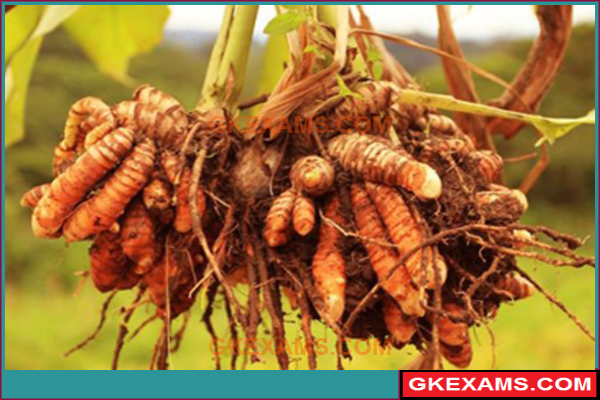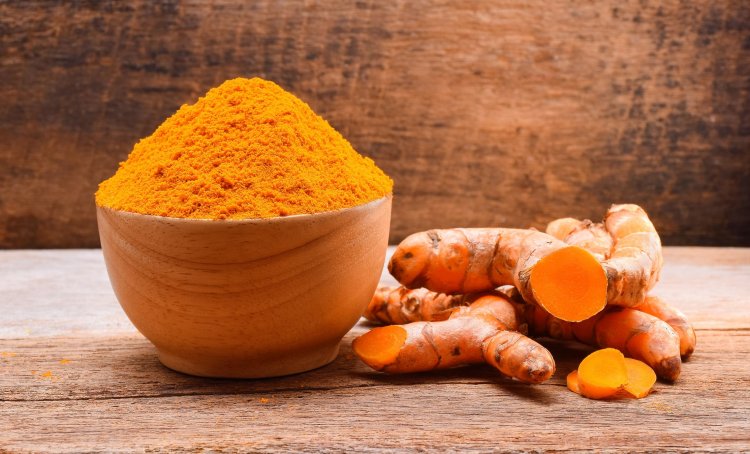हल्दी की खेती: एक एकड़ में लागत और मुनाफे का विस्तृत विश्लेषण (2025-26)
हल्दी, जिसे भारत का "सुनहरा मसाला" कहा जाता है, न केवल हमारे किचन का एक अनिवार्य हिस्सा है, बल्कि अपने औषधीय गुणों के लिए प्रसिद्ध एक उच्च-मूल्य वाली नकदी फसल भी है। देश भर के किसानों के लिए, हल्दी की खेती एक अत्यधिक लाभदायक उद्यम हो सकता है।
इसका मुख्य बुवाई का मौसम अप्रैल से जुलाई तक चलता है, और इस समय कई किसान अपनी फसल का चुनाव कर रहे हैं। जो लोग इस फसल पर विचार कर रहे हैं, उनके लिए एक महत्वपूर्ण प्रश्न उठता है: "वास्तव में कितना निवेश लगेगा, और मैं realistically कितने मुनाफे की उम्मीद कर सकता हूँ?"
यह गाइड एक एकड़ भूमि पर हल्दी की खेती के लिए लागत और मुनाफे की चरण-दर-चरण गणना प्रदान करता है, जो वर्तमान कृषि पद्धतियों और 2025-26 सीजन के लिए अनुमानित बाजार दरों पर आधारित है।
हमारी गणना के लिए बुनियादी मान्यताएँ:
- भूमि क्षेत्र (Land Area): 1 एकड़
- फसल की अवधि (Crop Duration): 8 से 9 महीने
- बीज की किस्म (Seed Variety): एक उच्च उपज वाली स्थानीय किस्म जैसे 'राजेंद्र सोनिया'।
- खेती की विधि (Farming Method): अच्छी कृषि पद्धतियों के साथ मानक सिंचित खेती।
भाग 1: एक एकड़ में कुल निवेश (कुल लागत)
कुल निवेश में खेत की तैयारी से लेकर कटाई के बाद की प्रक्रिया तक, इनपुट लागत और श्रम शुल्क का संयोजन शामिल है।
| खर्च का विवरण | जानकारी | अनुमानित लागत (₹) |
|---|---|---|
| 1. खेत की तैयारी | 1-2 गहरी जुताई, हैरो चलाना, और मेड़ व नालियां बनाना। | ₹ 5,000 |
| 2. बीज (हल्दी गांठें) (सबसे बड़ा खर्च) | 800 - 1,000 किलो अच्छी गुणवत्ता वाली हल्दी की गांठें। औसत दर @ ₹35/किलो। | ₹ 35,000 |
| 3. बुवाई / रोपण का श्रम | मेड़ों पर हल्दी की गांठें लगाने के लिए मजदूरी। | ₹ 4,000 |
| 4. खाद और उर्वरक | गोबर की खाद (10 टन) - ₹8,000; NPK और सूक्ष्म पोषक तत्व - ₹7,000। | ₹ 15,000 |
| 5. सिंचाई | लगभग 6-8 सिंचाई (मानसून पर निर्भर)। | ₹ 8,000 |
| 6. खरपतवार प्रबंधन | 2-3 बार हाथ से निराई या खरपतवारनाशी का उपयोग। | ₹ 7,000 |
| 7. कीट और रोग प्रबंधन | कंद सड़न आदि के लिए निवारक और उपचारात्मक स्प्रे की लागत। | ₹ 4,000 |
| 8. कटाई का श्रम | हल्दी की गांठों को खोदकर निकालने के लिए काफी श्रम की आवश्यकता होती है। | ₹ 12,000 |
| 9. कटाई के बाद की प्रक्रिया | गांठों को उबालना, सुखाना (15-20 दिन), और पॉलिश करना। | ₹ 10,000 |
| 10. विविध खर्च (आकस्मिक) | अप्रत्याशित खर्च, परिवहन आदि के लिए 5%। | ₹ 5,000 |
| कुल अनुमानित निवेश (A) | ₹ 1,05,000 | |
भाग 2: आय और शुद्ध लाभ की गणना
मुनाफा सीधे दो कारकों पर निर्भर करता है: अंतिम उपज और बिक्री के समय बाजार दर।
कदम 1: पैदावार की गणना (Yield)
- औसत ताज़ी हल्दी की उपज: एक एकड़ से, एक किसान 8,000 किलो से 10,000 किलो कच्ची, ताज़ी हल्दी की उपज की उम्मीद कर सकता है। चलिए एक रूढ़िवादी औसत 9,000 किलो लेते हैं।
- सूखी हल्दी की गणना: हल्दी ज्यादातर सूखे रूप में बेची जाती है। ताज़ी हल्दी से सूखी हल्दी की रिकवरी दर लगभग 20-22% होती है।
- सूखी उपज = 9,000 किलो (ताज़ी उपज) x 22% = 1,980 किलो (चलिए इसे 2,000 किलो / 20 क्विंटल मान लेते हैं)।
कदम 2: कुल आय की गणना (Gross Income)
सूखी हल्दी का बाजार मूल्य बहुत अस्थिर होता है। यह गुणवत्ता (करक्यूमिन की मात्रा), किस्म और बाजार की मांग के आधार पर ₹70/किलो से लेकर ₹150/किलो से अधिक तक हो सकता है। आइए हम ₹100 प्रति किलो की एक रूढ़िवादी औसत बाजार कीमत मान लें।
कुल आय (B) = कुल सूखी उपज x बाजार मूल्य
कुल आय = 2,000 किलो x ₹100/किलो = ₹ 2,00,000
कदम 3: शुद्ध लाभ की गणना (Net Profit)
शुद्ध लाभ = कुल आय (B) - कुल निवेश (A)
शुद्ध लाभ = ₹ 2,00,000 - ₹ 1,05,000
शुद्ध लाभ = ₹ 95,000 प्रति एकड़
मुनाफे को बहुत प्रभावित करने वाले कारक
- बाजार मूल्य में उतार-चढ़ाव: यह सबसे बड़ा एकल कारक है। सिर्फ ₹20/किलो का मूल्य परिवर्तन अंतिम लाभ को ₹40,000 प्रति एकड़ तक बदल सकता है।
- उपज और गुणवत्ता: उच्च गुणवत्ता वाले बीज का उपयोग करने से उपज बढ़ सकती है। इसके अलावा, उच्च करक्यूमिन वाली किस्मों को प्रीमियम मूल्य मिलता है।
- प्रसंस्करण (Processing): अच्छी तरह से उबली हुई, ठीक से सुखाई गई और पॉलिश की हुई हल्दी बेहतर दिखती है, जिससे मंडी में उच्च कीमतें मिलती हैं।
- मूल्य संवर्धन और सीधी बिक्री: कच्ची सूखी हल्दी बेचने के बजाय, इसे पाउडर के रूप में या सीधे उपभोक्ताओं को बेचने से लाभ मार्जिन में काफी वृद्धि हो सकती है।
- सह-फसली (Intercropping): आप हल्दी के साथ मक्का, प्याज या मिर्च जैसी कम अवधि की फसलें उगाकर अतिरिक्त आय अर्जित कर सकते हैं।
निष्कर्ष
हल्दी की खेती एक लंबी अवधि (8-9 महीने) की फसल है जिसमें महत्वपूर्ण प्रारंभिक निवेश की आवश्यकता होती है। हालांकि, एक सामान्य वर्ष में लगभग ₹90,000 से ₹1,00,000 प्रति एकड़ के संभावित शुद्ध लाभ के साथ, यह एक बहुत ही आकर्षक और लाभदायक कृषि उद्यम है।
हल्दी की खेती में सफलता भाग्य पर कम और सावधानीपूर्वक योजना, गुणवत्ता वाले इनपुट, धैर्य और बाजार पर गहरी नजर रखने पर अधिक निर्भर करती है।
क्या आप हल्दी की खेती करने की योजना बना रहे हैं? आप किन सबसे बड़ी चुनौतियों का अनुमान लगाते हैं? नीचे टिप्पणी में अपने विचार साझा करें!


